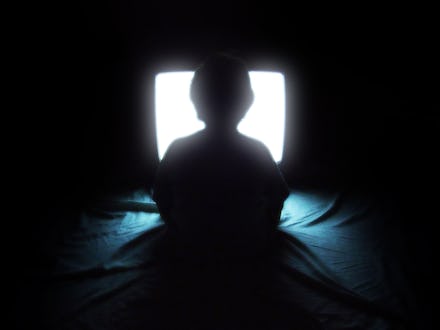Why Norwegian TV Shows Are 134 Hours Long

There is a new trend in television that defies the logic of modern programming. There is no storyline — no character development, climaxes, or cliffhangers. There is no script and no drama.
It's called Slow TV. And it's coming to the U.S. as early as summer 2014.
Originally proposed in Norway as a remedy for increasingly attention-strapped audiences, Slow TV offers hours of continuous programming with no foreseeable action. The idea of television programming with breathing room may seem appealing in the competitive arms race among television producers for the next big thing, but this longer, more drawn out programming isn't necessarily a boon to viewers already glued to their screens.
Lore has it that Slow TV started when the Norwegian Broadcasting Corporation (NRK), the national network on which it airs, began conceiving of ways to best celebrate the 100th anniversary of Norway's main train line. Bergensbanen, as the first-ever Slow TV show was called, consisted of a live, continuous broadcast of every single minute of a train journey from Bergen to Oslo. The episode aired in 2009 and lasted 7.5 hours. It was met with fanfare, encouraging producers to dream up slower and longer programming.
Over the next few years, a 134-hour coastal cruise, 12 hours of a stack of firewood burning, 18 hours of salmon fishing, and nine hours of a knitting circle hit Norwegian airwaves. Audiences were hooked: 3 million people (out of a population of 5 million) tuned in for Hurtigruten: Minutt for Minutt, the five-day, nonstop cruise program, for an average of four hours per viewing — making it a hit by any standards. And the rest of the world caught on in 2013, when National Knitting Evening's nine-hour knitting circle attempted to break Guinness' "sheep to jumper" record.
TV has been speeding up and attention spans shrinking since the MTV generation earned its name. Over the past 10 years alone, the average attention span has dropped from 12 minutes to a mere five. Watching knitters purl a large men's sweater for nine hours is supposed to be an antidote to what social media has done to our brains, to help us stop organizing thoughts in abbreviated text messages, #hashtags, and 140-character tweets.
And in an age when reality TV is far from real — when real people become forced archetypes fueled with too much booze to guarantee drama and, therefore, ratings — Slow TV offers an alternative to Hollywood. Its relaxed tempo mimics the pace of real life, where excitement doesn't come every 15 minutes just before a commercial break.
But Slow TV isn't the solution — it's part of the problem. It's less about slowing down and offering a mediated form of meditation than it is about offering the most extreme form of voyeurism. Instead of actually sitting by a fire or embarking upon a train journey, Slow TV lets viewers engage these slow tempo tasks vicariously. If the goal is to meditate and slow down, maybe we should just stare out the window for hours rather than watch someone else do it.
A scene from 'Bergensbanen.'
And, of course, Slow TV is interactive. Since any action takes place almost entirely in the minds of and discussions among viewers, social media tie-ins are crucial for the medium's success. One can only imagine a social media intern being tasked with drafting 300 hashtags in advance of the program to build hype and sustain it throughout a broadcast.
A scene from 'National Firewood Night.'
Slow TV works precisely because it's fresh. It hasn't been done before with television the way it has been in other media, such as with the advent of slow food or the rebirth of long-form journalism. It's the newest frontier in the arms race among television networks. And the American version will no doubt try to present us with something we've never seen before — like 10-hours from a surveillance camera at a New York subway, or a dispatch from the dashboard of a cross-country road trip. The good news is we won't have to speculate for long. LMNO Productions has already acquired the US rights to the show and four US networks are interested in signing on.
After the 18-hour program depicting the opening night of salmon fishing season aired, at least one executive reportedly commented, "It felt a little short, don't you think?" Maybe when the show hits US shores we'll be lucky enough to watch paint dry.